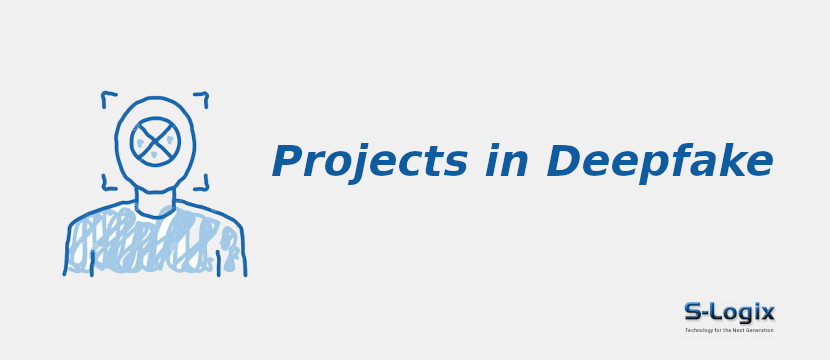Project Background:
Deepfake technology emerges from the intersection of advancements in artificial intelligence and digital media manipulation techniques. Deepfake refers to the sophisticated use of deep learning algorithms, particularly generative adversarial networks (GANs) and deep neural networks (DNNs), to create highly realistic and often deceptive videos, images, or audio recordings by superimposing or replacing the original content with synthesized content. Initially, Deepfake technology gained attention in the entertainment industry for its ability to create convincing special effects and digital doubles for actors.
However, concerns quickly arose regarding its potential misuse for creating misleading or malicious content, such as fabricated news reports, political propaganda, or non-consensual pornography. It involves recognizing the rapid evolution of Deepfake technology and its implications for society, including threats to privacy, security, and trust in digital media. Moreover, the background encompasses efforts to understand and mitigate the ethical, legal, and societal implications of Deepfake technology and develop countermeasures and detection techniques to combat its misuse.
Problem Statement
- Enables the creation of highly convincing fake videos, images, or audio recordings, which can be misused to spread misinformation or fabricate events.
- Used to create non-consensual pornography or manipulate personal images or videos, posing significant privacy risks for individuals.
-
The proliferation of Deepfake content can undermine trust in digital media by making distinguishing between genuine and manipulated content difficult. It leads to the erosion of trust in news, journalism, and online information sources.
- Exploited for political manipulation, such as spreading false information or fabricating speeches or statements by public figures, influencing public opinion, and disrupting democratic processes.
-
Ethical implications of Deepfake technology include consent, authenticity, and the potential for harm to individuals or society.
- Raises legal challenges related to intellectual property rights, defamation, privacy violations, and criminal activities, requiring legal frameworks to address these issues effectively.
Aim and Objectives
- Develop effective strategies to detect and mitigate the harmful effects of Deepfake technology on society.
-
Develop advanced deep learning algorithms for detecting Deepfake content with high accuracy.
-
Enhance public awareness and education about the risks and implications of Deepfake technology.
-
Collaborate with technology companies and social media platforms to implement safeguards against Deepfake content dissemination.
-
Investigate the ethical, legal, and societal implications of Deepfake technology and propose appropriate regulations and guidelines.
-
Foster interdisciplinary research collaborations to address the multifaceted challenges posed by Deepfake technology.
-
Develop robust authentication and verification mechanisms to ensure the integrity and trustworthiness of digital media content.
Contributions to Deepfake
- Development of advanced deep learning algorithms for detecting and mitigating Deepfake content.
- Enhancement of public awareness and education about the risks and implications of Deepfake technology.
- Collaboration with technology companies and social media platforms to implement safeguards against Deepfake content dissemination.
- Investigate the ethical, legal, and societal implications of Deepfake technology and propose appropriate regulations and guidelines.
- Facilitation of interdisciplinary research collaborations to address the multifaceted challenges posed by Deepfake technology.
- Development of robust authentication and verification mechanisms to ensure the integrity and trustworthiness of digital media content.
Deep Learning Algorithms for Deepfake
- Generative Adversarial Networks (GANs)
-
Variational Autoencoders (VAEs)
-
Convolutional Neural Networks (CNNs)
-
Recurrent Neural Networks (RNNs)
-
Transformer models
-
Autoencoders
-
Deep Belief Networks (DBNs)
-
Capsule Networks
-
Siamese Networks
-
Adversarial Variational Bayes (AVB)
Datasets for Deepfake
- Deepfake Detection Challenge (DFDC) dataset
-
FaceForensics++ dataset
-
CelebA dataset
-
YouTube Deepfake Detection Benchmark dataset
-
UADFV dataset
-
DeepFake-TIMIT dataset
-
FF++ FaceForensics dataset
-
Google Deepfake Detection Challenge dataset
-
Deepfake Detection (DeepFakeDetection) dataset
-
Deepfake Detection (DFD) dataset
Software Tools and Technologies
Operating System: Ubuntu 18.04 LTS 64bit / Windows 10
Development Tools: Anaconda3, Spyder 5.0, Jupyter Notebook
Language Version: Python 3.9
Python Libraries:
1.Python ML Libraries:
- Scikit-Learn
- Numpy
- Pandas
- Matplotlib
- Seaborn
- Docker
- MLflow
2.Deep Learning Frameworks:
- Keras
- TensorFlow
- PyTorch
